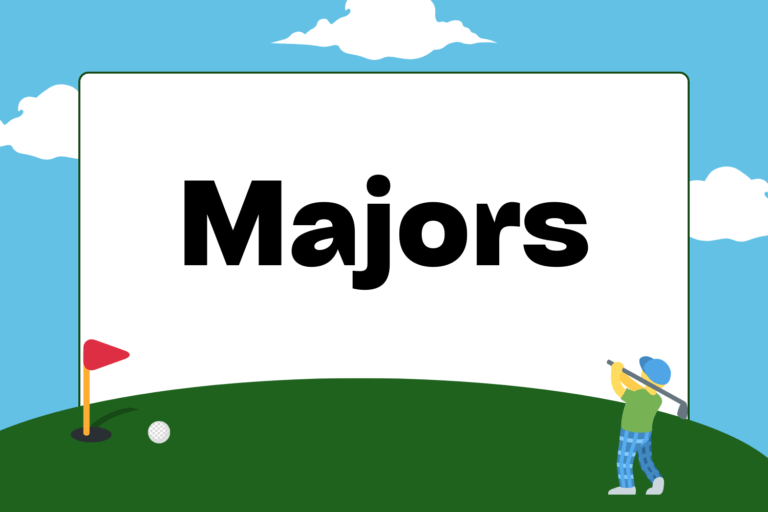If you’ve been playing golf for a while, or if you’ve watched it on television, you know that golfers are allowed to mark their balls on the putting green with placeholders. What you may not know are the reasons behind this rule, the benefits golfers receive from it, and the best ways to go about marking your own golf ball. After reading this guide, though, you’ll be a ball-marking expert.
Why Marking Matters
Marking your golf ball is an option unique to the putting green; you can’t do it anywhere else on the golf course. So why is it so important there? Here are the top reasons marking your golf ball is a rule you should take advantage of on the putting green:
Clear the way:
Being able to mark your ball on the green ensures that you’ll never have to hit over or around a playing partner’s ball. If your ball is in the line of another golfer’s shot, marking your ball with a small, flat ball marker will clear the way for his shot. And of course, you get the same benefit from others.
Lift, clean, and place:
Golf balls accumulate a lot of dirt, mud, and grass on their journeys to the putting green. Marking your golf ball on the green allows you to clean your ball before replacing it and taking your putt, which limits the outside factors on the way your ball rolls. A clean ball rolls truer than a dirty one.
Line it up:
When you place your golf ball back where you originally marked it, you can take advantage of the opportunity to line up the brand of the ball on the line you want to hit your putt. Many golfers draw a straight line on their golf balls before starting their round, just for this opportunity. It can help you visualize your alignment, and help you make more putts.
The Ball Marker
The placeholder you use to mark your golf ball on the putting green is called, aptly, a ball marker. What you use as your ball marker is up to you. That is, there are no penalties for using unorthodox items as a ball marker.
However, it’s important to keep golf etiquette and best practices in mind when choosing your ball marker. The rules of golf suggest using a “small coin, or similar object.” That is, something small, relatively flat, and minimally distracting for other golfers.
Hot Tip: No Need for “Official” Ball Markers
There are thousands of manufactured ball markers that are designed specifically for this purpose, and you can find them in any golf equipment store. If you’re feeling particularly luxurious, you can even get them personally engraved.
But if you want to save some money, remember that you don’t have to use a ball marker that’s labeled “ball marker.” Instead, you can save the quarter you would have paid for it, and use that as your ball marker.
Marking the Ball
Marking a golf ball is a pretty straightforward process once you know how to do it correctly. Here are the most important aspects of marking your golf ball.
Placement of the Ball Marker
You’d be surprised at how many amateurs mark their golf balls incorrectly. Undoubtedly, the two most common mistakes golfers make when marking their balls are:
- They pick up the ball before placing the marker down.
- They don’t know where the marker goes.
Mark your golf ball, and then pick up your ball — not the other way around. You cannot touch or move a golf ball without first marking it.
The ball marker should be placed directly behind the golf ball, on a straight line from the cup through the ball. To find the right spot, stand behind your golf ball, facing the hole. Place the marker directly behind the golf ball on that line. Do not place it to the right of the ball, and not to the left — not in front of the ball, either. And it shouldn’t be placed a couple of inches behind the ball — place the marker directly behind the ball.
The same goes for putting your ball back. Place the golf ball directly in front of the ball marker, so that the ball ends up exactly where it originally was. Making this a consistent habit will remove the possibility of replacing your ball in an incorrect position, which can be grounds for penalties or worse in competition.
Moving Your Marker
From time to time you’ll be asked by a playing partner to move your ball marker. This is usually due to the fact that your marker lands on the intended line of his putt or shot. No worries — moving your marker is easy.
Use your putter head to measure the movement of your marker. Place the heel (bottom edge) of your putter head at your ball marker, and aim your putter head at a memorable object in the distance (a tree or a house, for instance). Once you have your putter head lined up with that object, keep it there as you pick up your ball marker. Now place the ball marker at the toe (top edge) of your putter head. You can do this as many times as needed to get your ball marker out of the way for your playing partner.
Important: Remember to move your ball marker back to its original location before putting your ball down. This is where that memorable object in the distance comes in handy. After your playing partner hits his shot and it’s your turn, line your putter head from your ball marker to that object and move your marker to its original location one putter head’s length at a time.
If you moved your ball marker one putter head’s length out of the way of your playing partner, move it back one putter head’s length before replacing your ball. Moved it two? Bring it back two, and so on.
The Mark of a Professional
Marking your golf ball correctly on the putting green won’t automatically transform you into a professional. What it will do, though, is help you play golf in a more professional manner. Now that you know the best practices of marking your golf ball, you can play golf more accordingly to the letter and the spirit of the rules, earning you respect from other golfers — the real mark of a professional.





